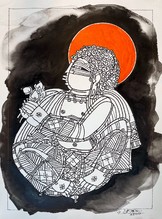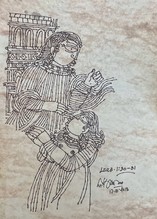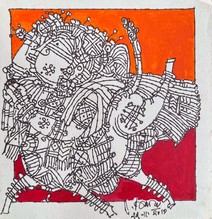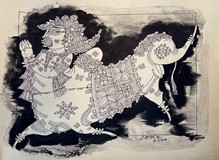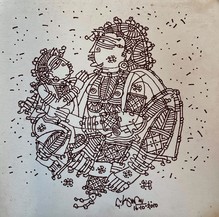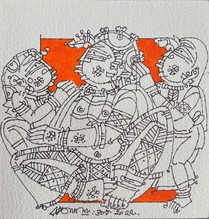
-
From 25 May-2012 To 15 Jun-2012
-
From 14 Apr-2006 To 10 May-2006
-
From 11 Jun-2015 To 14 Jun-2015
-
From 16 Jun-2016 To 19 Jun-2016
-
From 11 May-2017 To 14 May-2017
-
From 31 Jan-2018 To 03 Feb-2018
-
From 11 Jan-2022 To 18 Jan-2022
-
From 22 Feb-2022 To 27 Feb-2022
-
From 14 Jul-2023 To 23 Jul-2023
Regional Lalit Kala Akademi Scholarship & Senior Fellowship (2000-1); Honourable mention, National Art Exhibition (1997); All India Fine Arts & Crafts Society award (1996); Regional Lalit Kala Akademi Scholarship & Fellowship awarded by Government of India (1992-3); Intermediate Christian Art award, New York (1974); Lit. Lit. Annual Art award, New York (1973); Became State Lalit Kala Akademi scholar (1967); Bombay Art Society award (1965); Acquired a First Class Diploma in Advanced Painting in 1967 and a First Class Diploma in Fine Arts in 1966 at the Government College of Arts and Crafts, Chennai; Attained a First Class Diploma in Sheet Metal sculpture at the Government College in 1961
†
Selected Exhibitions
Athreyaa Art Gallery, Chennai (2009); 'Art for Prabhat', Travancore House, New Delhi (2008); 'G. Raman and M. Natesh: Indian Tradition and Subversion', The Noble Sage at Bharatiya Vidya Bhavan, London (2008); Vinyasa Premier Art Gallery, Chennai (2007); Ayya Art Gallaries, Chennai (2006); 'Chennai Excite; New Works From South India' The Noble Sage Art Gallery, London (2006); Vinyasa Art Gallery Annual Show, Chennai (2000-2); Mahatma Gandhi Exhibition, Victoria Technical Institute, Chennai (1993-2001);Nadu Oviam Nunkalai Kuzhu, Annual Exhibition, Lalit Kala Akademi, Chennai (1993-2001); Lalit Kala Akademi, Chennai (1999); Lalit Kala Akademi Exhibition, Delhi (1996); All India Fine Arts and Crafts Society, New Delhi (2006); South Zone Cultural Exhibition, Chennai (1995); Group Exhibition, Government College of Arts & Crafts (1994); Birla Academy of Art Centre, Kolkata (1993); Sakshi Gallery Chennai (1989); State Lalit Kala Academy, Chennai (1977-1991); All India Fine Arts and Crafts Society, New Delhi (1973-83); Bombay Art Society (1965); All India Artist Exhibition, Hyderabad (1963-78)







